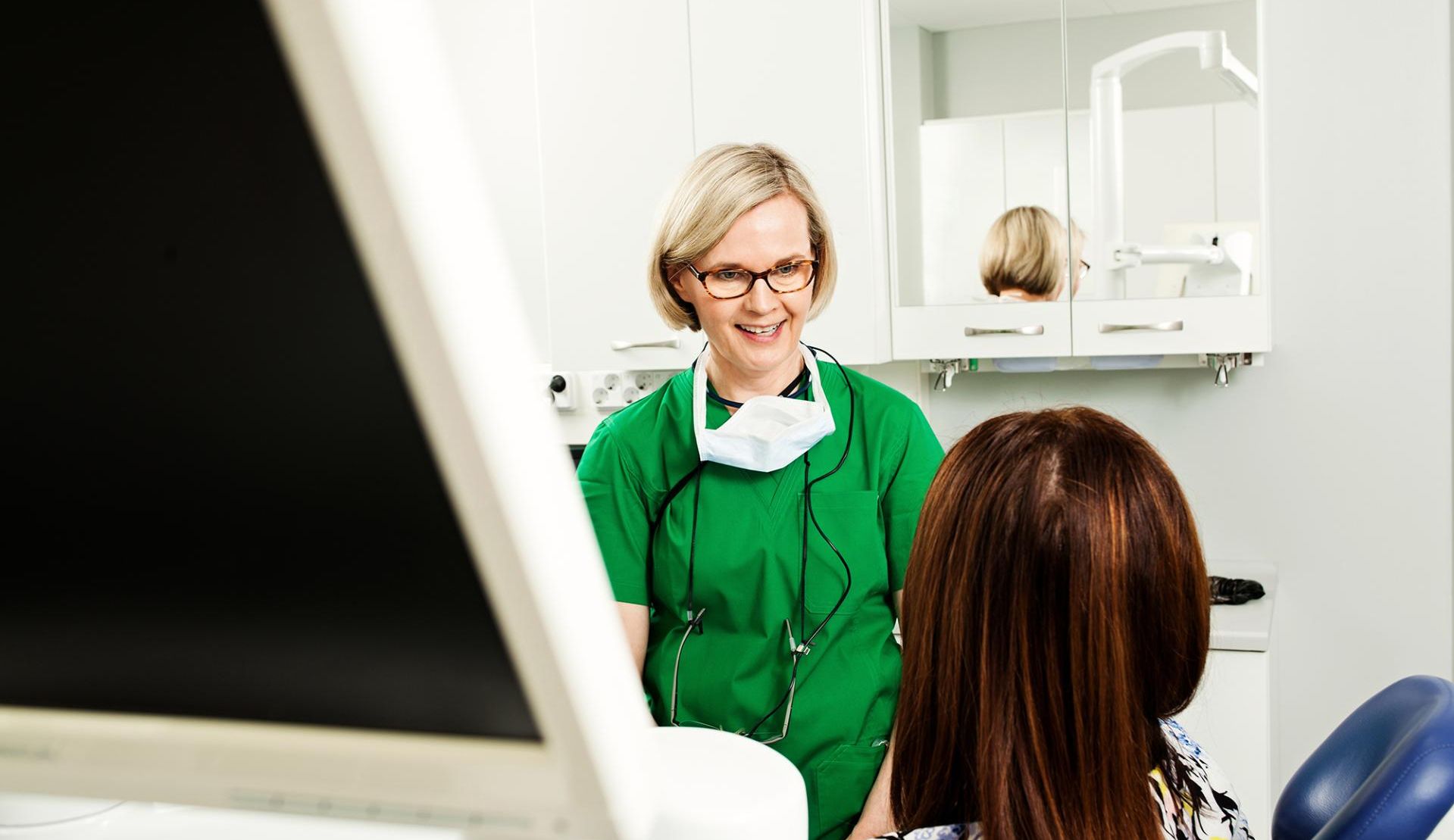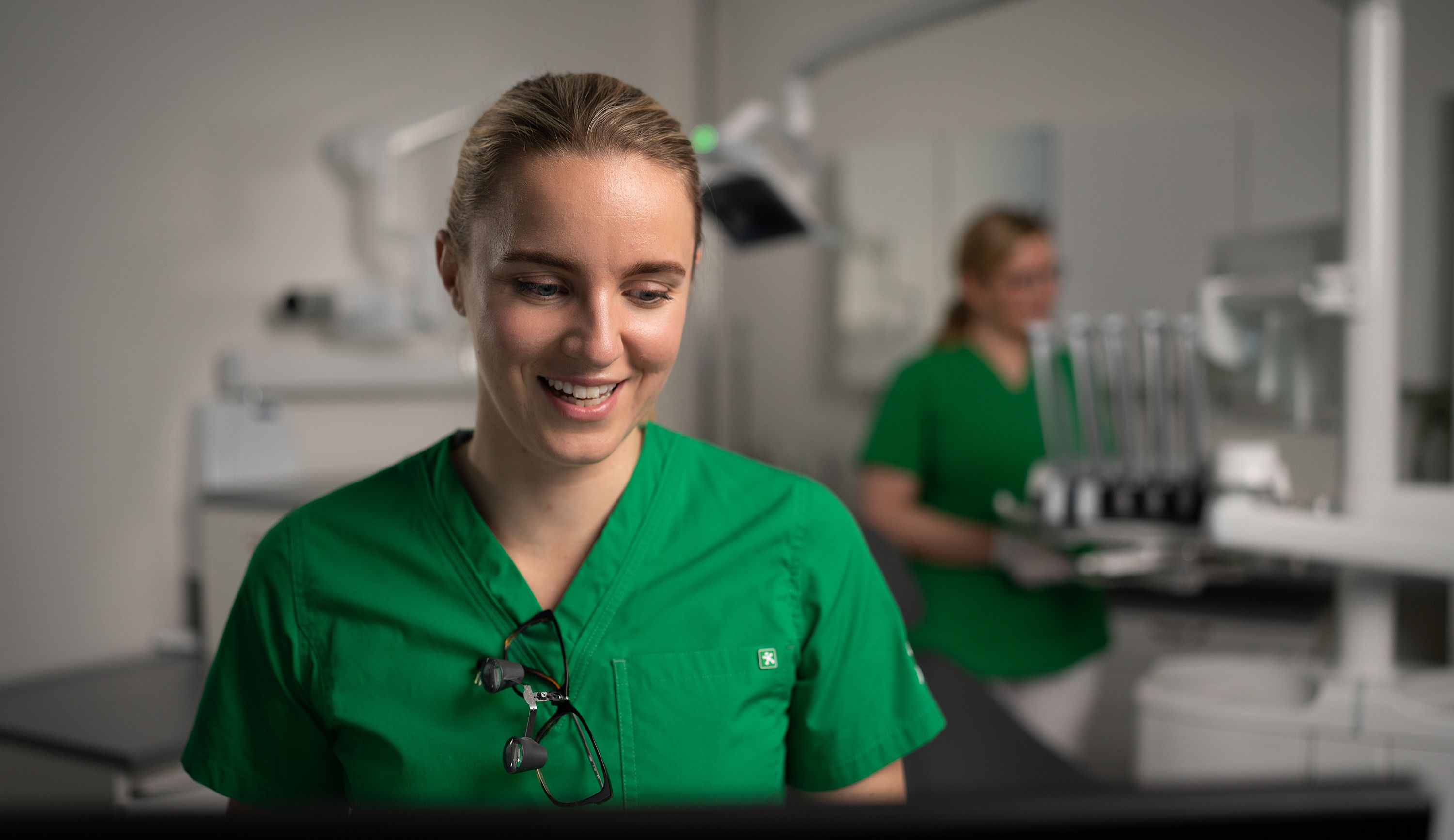

Teeth cleaning - simple instructions for cleaning your teeth
Cleaning your teeth is a big part of overall oral health. Do you need help removing tartar or stains? Our dental hygienists specialise in the removal of tartar and stains. They will also give you personalised instructions for cleaning your teeth.
Oral diseases affect the whole body
Oral infections do not just stay in the mouth. They affect the whole body: poor oral health may be a risk factor for heart attack, stroke and many other serious illnesses. Many chronic diseases are also easier to manage when there is no inflammation in the mouth.
Plaque that builds up on the surface of the teeth gradually hardens into tartar, which allows bacteria to attach to its rough surface. Bacteria in the plaque cause tooth decay. Slowly, the bacterial plaque also enters the space underneath the gum and causes inflammation.
In practice, good teeth cleaning means brushing your teeth twice a day and cleaning your interdental spaces daily.
How to clean your teeth?
The best tool for cleaning teeth is an electric toothbrush with a soft brush head. Not only does an electric toothbrush clean teeth effectively, but most electric toothbrushes have a pressure sensor, making it easy to avoid brushing too hard. The electric toothbrush is used to clean teeth by going over the surfaces of the teeth one by one. The electric toothbrush is used by moving the brush from one tooth to the other, not in a back and forth motion like with a regular toothbrush.
With a regular toothbrush, teeth are brushed in a back and forth motion on each surface, avoiding excessive pressure. Brushing too hard is harmful to the gums and can cause gum recession. The easiest way to clean your teeth is to create an order that suits you and repeat it every time. This will ensure that all surfaces are cleaned.
Fluoride has been shown to reduce tooth decay, and you should choose a toothpaste that contains 0.11–0.15% fluoride for brushing your teeth. After brushing, don’t rinse your mouth. This ensures that the fluoride will stay on your teeth and do its job.
Cleaning the interdental spaces
- The interdental spaces should be cleaned daily using dental floss and a silicone stick.
- The floss is slid between the teeth to clean the contact surface between the teeth.
- The silicone stick is used to go through the interdental spaces at the gumline in such a way that the stick also gently passes under the gum.
- If it is difficult for you to find time to clean your interdental spaces and gums during your evening routine, you can do it at any time of the day. The most important thing is to clean your teeth and interdental spaces every day.
Dental hygienist Jenni Tahkoniemi acted as the specialist for this article.
Frequently asked questions about teeth cleaning
Thorough teeth cleaning prevents caries, gingivitis and periodontitis, an infection that affects the gums and the tissues supporting the teeth.
Dental hygienists specialise in the removal of tartar and stains. They will also give you personalised instructions for cleaning your teeth.
Oral diseases can affect the whole body, and poor oral health can be a risk factor for heart attack and stroke as well as many other serious illnesses.
Plaque that builds up on the surface of the teeth hardens into tartar, which allows bacteria to attach to its rough surface. Bacteria in the plaque cause tooth decay and can eventually lead to inflammation of the gums.
In practice, good teeth cleaning means brushing your teeth twice a day and cleaning your interdental spaces daily. The best tool for cleaning teeth is an electric toothbrush with a soft brush head. Toothpaste that contains fluoride has been shown to reduce tooth decay, and you should choose a toothpaste that contains 0.11–0.15% fluoride for brushing your teeth. After brushing, don’t rinse your mouth. This ensures that the fluoride will stay on your teeth and do its job.



